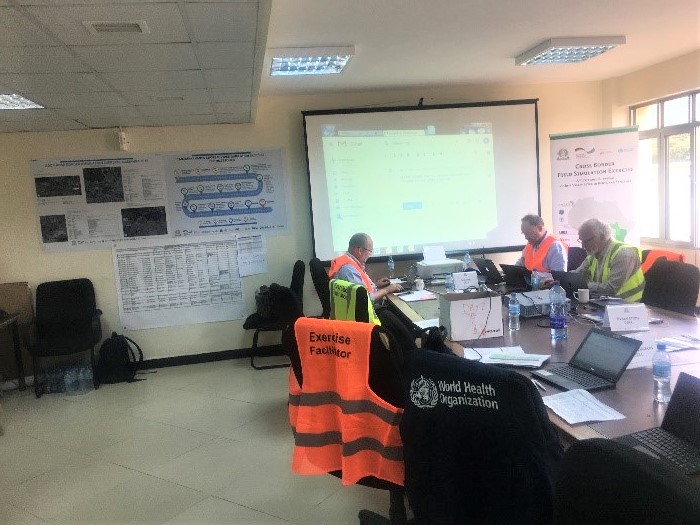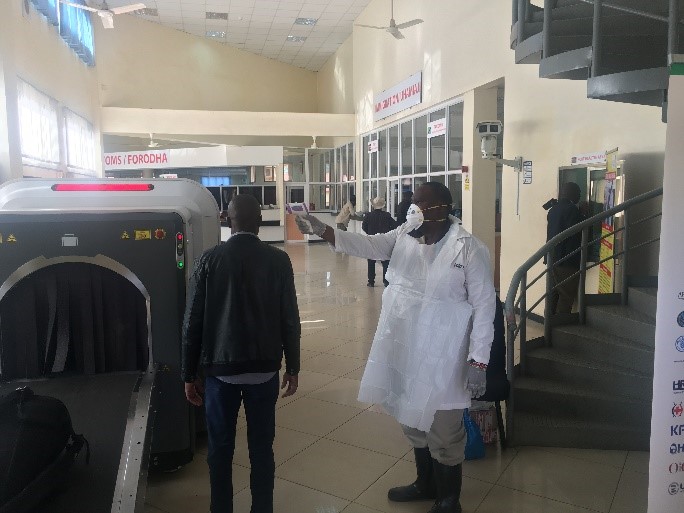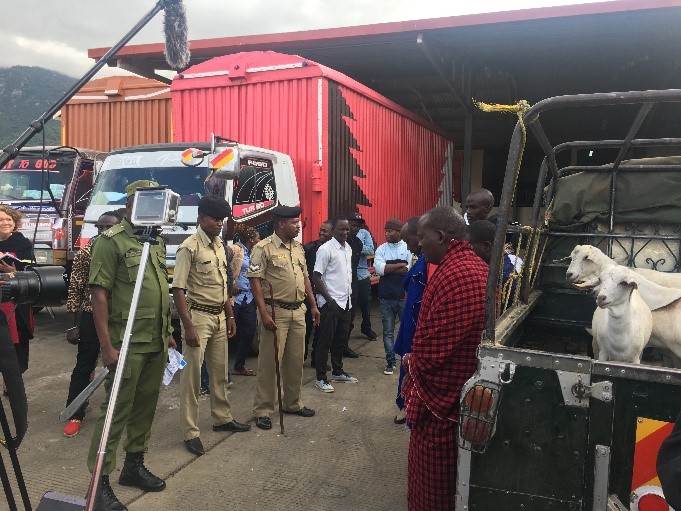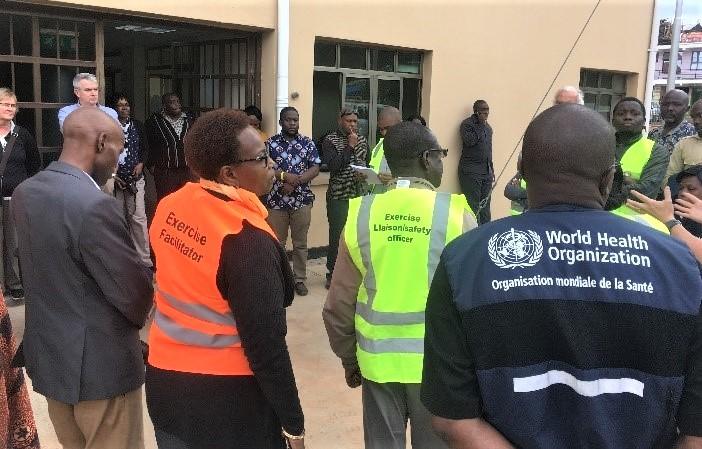
Simulation Exercise Sketches a Vision of Cross-Border Preparedness & Response Levels in East Africa
June 11, 2019
African Region
United Republic Of Tanzania
Jackson Tipapa, a cattle farmer, sat among his family members, neighbours and community and narrated the heart-wrenching situation on his farm and in his neighbourhood, to a team of health and livestock experts at home in Loitokitok, Kenya.
The 48-year old husband and father of four is part of a community experiencing loss of their cattle and the threat of further loss of their goats, sheep and cows through a strange disease.
“The cattle are ill with diarrhea, weakness and some have died while others have had abortions,” he told an assessment team. Worse still, some people in the community have fallen sick – with diarrhea, high fever, vomiting and related symptoms.
“We are worried that the situation is getting worse – with more animals and people are falling sick and it seems to be spreading.”
In Longido on the Tanzanian side of the nearby border, another farmer told of a similar situation to that described by Tipapa.
Tipapa and his community were participants in a Field Simulation Exercise (FSX) at the Namanga One Stop Border Post and surrounding areas in both Kenya and Tanzania. The exercise was carried out between June 11 to June 14 and was convened by the East Africa Community (EAC). WHO developed and ran the field exercise. It tested country and regional preparedness, prevention and response to an emergency outbreak in the region and involved various real-life settings across the border of Kenya and Tanzania with a multi-sectoral approach incorporating all related sectors including health, livestock, agriculture, tourism and environment.
Other scenarios mimicked what often happens across many borders and—which if not checked or stopped—disregard health standard operating procedures and other guidelines that help guard against emergency disease outbreaks that affect both humans and animals.
Rapid Response teams acted on emergency alerts sent from a control room. Follow-up response was tested to see how ready health teams and other emergency teams were to respond to emergencies. This was tested in health facilities, a slaughterhouse, a safari vehicle with a sick patient crossing the border, a truck with live animals, a passenger with meat products, traders selling their wares to passengers and airport entry points at Jomo Kenyatta, Nairobi, Kilimanjaro in Tanzania and in the Public Health Emergency Operation Centres (EOC), as well as in the functioning of the EAC secretariat.
The exercise aimed to determine the level of preparedness and response and to assess operational capabilities at regional and national levels; the strengths and weaknesses in coordination and collaboration mechanisms; emergency response deployment, logistics and administrative processes as well as risk and crisis communication (RCC) and emergency management and leadership. “We planned it so that the entire response system and structure is assessed, so that we can validate how ready we are for any impending outbreak” says Frederik Copper, the WHO Exercise Coordinator .
WHO with financial support from the German Government through the Deutsche Gesellschaft für Internationale Zusammenarbeit (GIZ) GmbH is the lead technical agency requested by the EAC Secretariat to develop, design, implement and evaluate the exercise. Other partners include Food and Agricultural Organizations (FAO), World Organisation for Animal Health (OIE), Defense Threat Reduction Agency (DTRA), Africa CDC, USAID, Kenya Red Cross, among others.
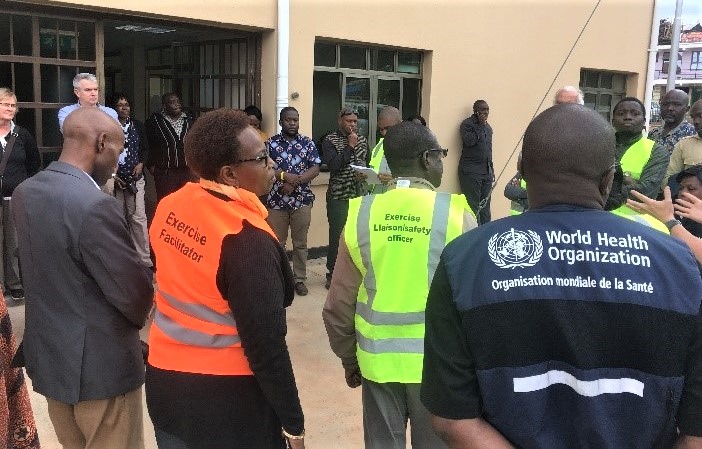
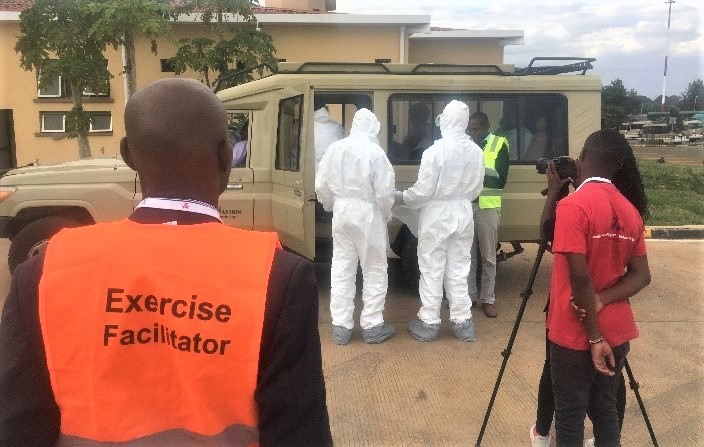
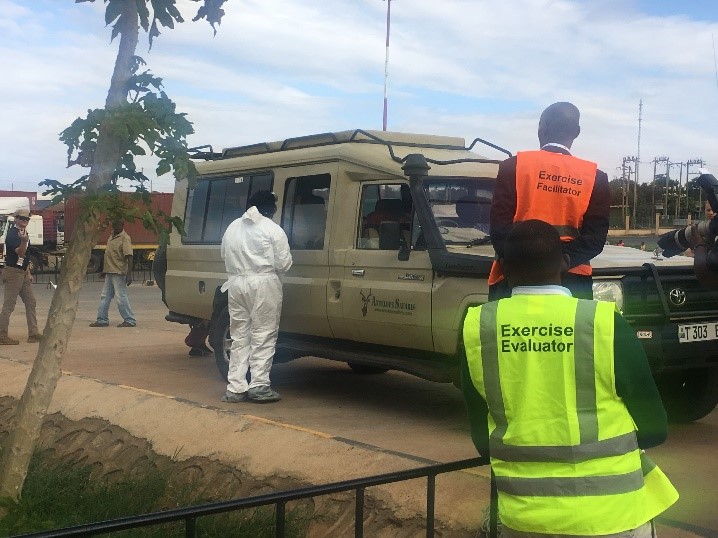
`